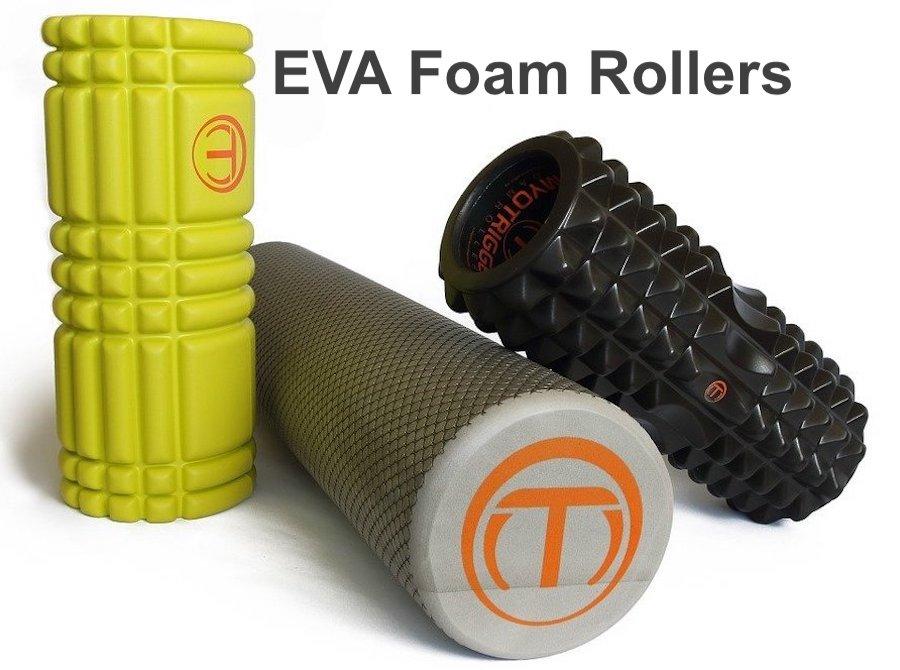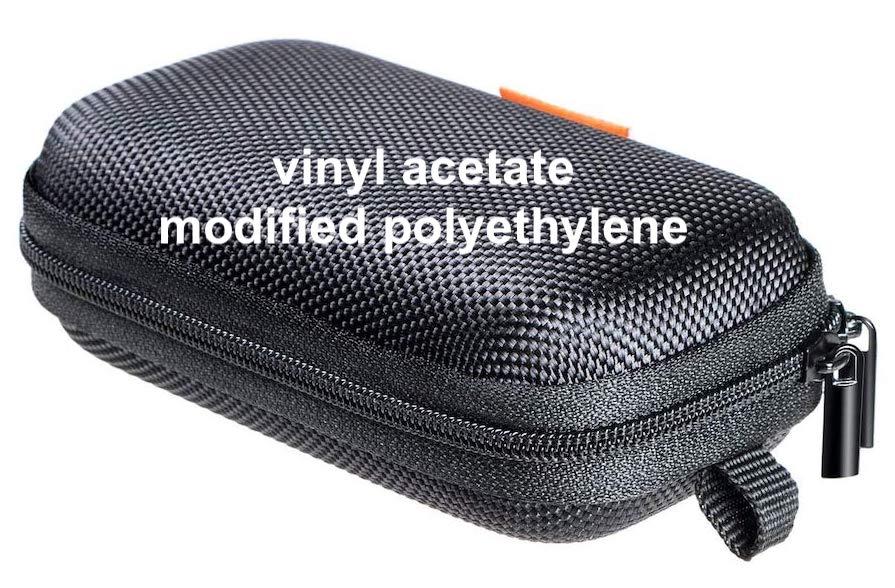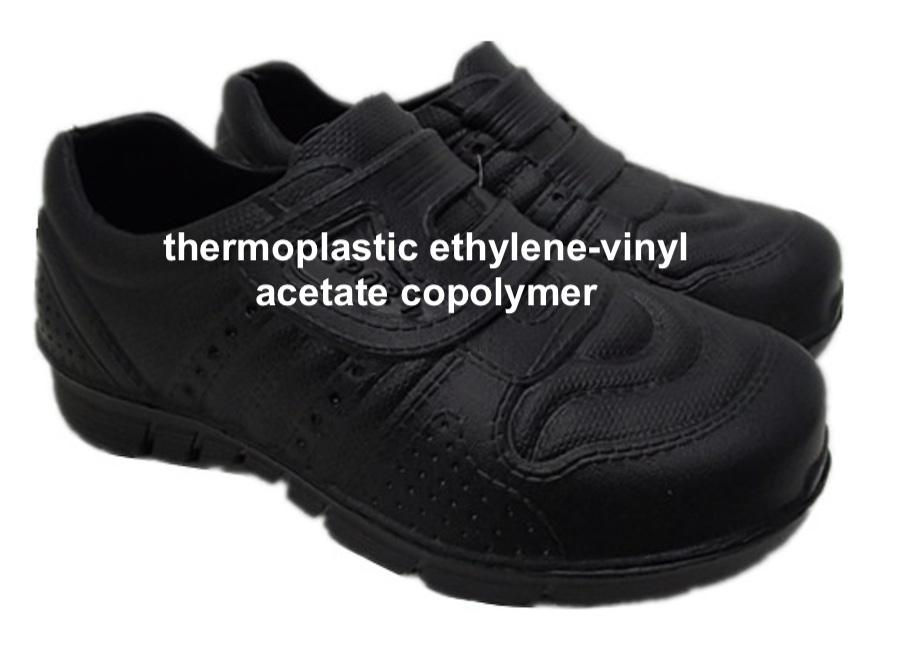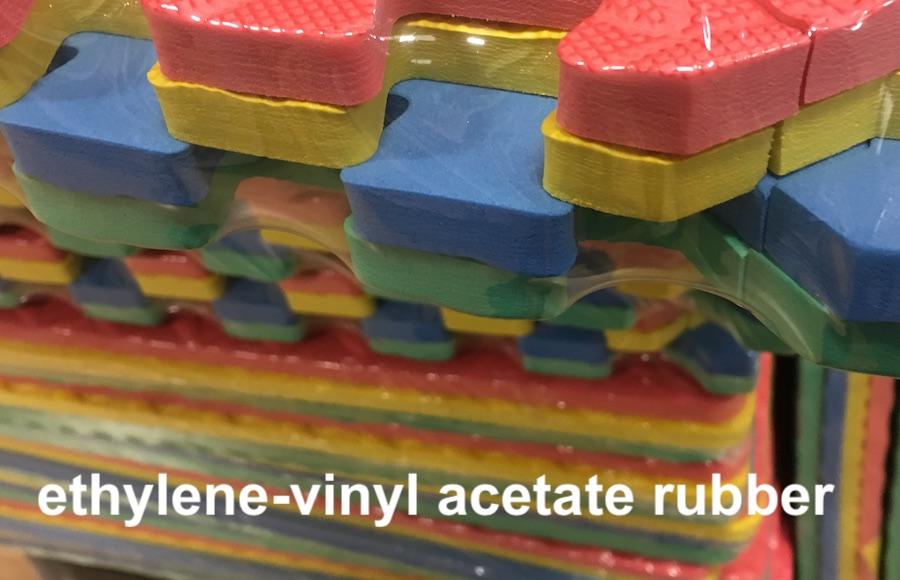You’ve probably used EVA foam many times before and perhaps not realized it, maybe even on a daily basis! So what is EVA foam?
Here I’m going over the common uses of EVA foam, the features, benefits, and which industries incorporate the use of EVA. Starting with a summary of what EVA foam is.
EVA (ethylene-vinyl acetate) is a closed-cell copolymer foam. It is converted or “foamed” from the material “EVA”, a type of plastic. It’s made by a copolymerization reaction between vinyl acetate and ethylene. Special properties of EVA foam occur by adding foaming additives and catalysts.
Let’s go stright on to the numerous and common uses that EVA foam offers.
Common uses of EVA foam
EVA foam has numerous uses, including sports shoes and pads, gym mats, pool floats, equipment padding, saddles, foam rollers, model building, cosplay outfits, and kneeling pads. Inside helmets, cars, appliances, snow, and ski boots, as well as slippers and sandals, fishing rods, and other handles.
EVA foam offers a competitive alternative to cork, and particularly rubber for numerous applications for its properties, which include.
- Impact and vibration absorptions
- Thermal insulation properties
- Acoustical properties
- Chemical, fuel, and oil spill containment
- Water and splash
- Buoyancy properties
- High resilience
Due to these qualities, EVA foam is used in numerous industries:
- Automotive
- Electronics
- Healthcare
- Footwear and clothing
- Sports Facilities
- Toys and games
- Marine and water floatation
- Resin additives and glues
- Commercial and industrial packaging
- Bookbinding and paper industries
- Craft and costume sector

Background to Eva foam
EVA foam is an acronym for the closed-cell ethylene-vinyl acetate (EVA) copolymer foam.
EVA (Ethylene-vinyl acetate) is a type of plastic made by combining ethylene and vinyl acetate. It exhibits a very soft and elastic nature to it that’s like rubber – but equally tough and rigid.
It’s this “EVA” material that has been engineered via a specific process to produce “EVA foam”. So EVA foam is derived – or converted from EVA, a type of plastic.
The conversion of EVA to “EVA foam” also creates a whole conversion in its properties, chemical composition, and behavior.
How is Eva foam made?
In simple terms, EVA foam is made by a copolymerization reaction between vinyl acetate and ethylene.
On average, a sheet of EVA foam will include a 10% – 60% weight percentage of vinyl.
Polyethylene material is also another important element for foaming EVA – “foaming” meaning EVA foaming production.
It’s certainly more of a scientific, complex, and time-consuming process to produce EVA foam than described here. However, to keep it simple and more understandable this is the basic process of producing EVA foam.
Foaming process
Technically speaking, EVA, the plastic form is “Foamed” (converted to a foam) by either an injection or molding process. In both these processes, bubbles and high heat are added to the compound mix.
This addition is what contributes to the formation of the closed-cell structure to make it more usable.
The different types and amount of foaming additives and catalysts included in the molding process of EVA foam can affect its inherent properties, among others, these features:
- Density
- Color
- Hardness
- Resilience
This is what affects how much of a specific property, (resilience for example) EVA foam has. For high resilience, EVA foam is also mixed with rubber foam to imbibe its more resilient abilities.
The purpose of doing this is to make EVA foam more suitable for a specific purpose. For example, a high resilience EVA foam is used for purposes such as:
- Squeegee blades and wipers
- Foam gaskets
- Foam seals
- Seat cushions
- And many more applications.
If you require Eva foam for a specific purpose, it’s always best to discuss it with an EVA foam supplier.
They will suggest the best type of EVA foam to suit your purpose. They do this by referring to the specific type of additives included in the EVA foam – thereby getting as near as possible to the compound you need.
Eva foam can be in three formulations
The three formulations of EVA foams come from the “EVA” itself. Meaning the three formulations of “EVA Foam” are a result of what type of “EVA” formulation is used for the process.
To offer some further background, these formulations come from the ratio of the mix which I mentioned earlier, EVA is a copolymer produced by mixing two different plastics as Vinyl acetate and Ethylene.
The change in the ratio of these two compounds will create a change in the rigidity of EVA and thereby its formulation.
Usually the lower the ratio of Vinyl acetate is in the mix, the more brittle the end product is.
With that overview, here are the three formulations of EVA foam (created by the formulation of EVA used for the foaming process).
Low percentage vinyl acetate (vinyl acetate modified polyethylene)
As the word suggests, this is where the mix has a low percentage of Vinyl acetate. The percentage for this usually goes up to 4% of vinyl acetate.
This formula is also known or referred to as vinyl acetate modified polyethylene and takes the most brittle form of EVA foam. The brittleness restricts the versatile nature of the foam.

Medium percentage vinyl acetate (thermoplastic ethylene-vinyl acetate copolymer)
As alluded to, this medium is where the copolymer – or the mix has a medium (greater than the “Low percentage vinyl acetate” formulation) of vinyl acetate.
The percentage for this usually ranges between 4%-30%. This formulation is also called the “thermoplastic ethylene-vinyl acetate copolymer” and is relatively more flexible over its brittle properties.
For comparison, it’s more flexible than the low percentage vinyl acetate. This flexibility allows a greater degree of versatility in potential uses.

High percentage vinyl acetate (ethylene-vinyl acetate rubber)
This is where the vinyl acetate ratio in the mix is greater than 60%.
This is also known as ethylene-vinyl acetate rubber and is the most versatile, flexible, and high-quality formulation of EVA foam.
This is the formulation that offers the most flexibility and versatility at its potential.

The 5 best features of EVA foam
Like anything, Eva foam has its lowdown, but since the topic highlights the foam, here are some appealing features of EVA foam that make it stand out among many other types of foam.
1. Flexibility and versatility
This is one of the most outstanding features of EVA foam. This feature is what makes EVA foam easy to customize and enables it to be suitable for use in a wide range of products …and across numerous industries; such as marine, healthcare, recreation, footwear, electronic and automotive industries.
2. Resists external environmental factors
EVA foam is well known for a high resisting capacity. This means that EVA foam can maintain its robustness and many given environments, be it bad weather, UVA radiation, or extreme temperatures.
EVA foam can still be flexible at temperatures as low as -94°F. This is the reason why it’s used for equipment that is produced for Antarctic expeditions.
3. Reliable chemical resistance
With EVA foam there is less concern for toxic implications, such as exposure to chemicals.
It’s resistant to most types of toxic elements like oils and greases, dilute alkalis, dilute acids, aliphatic hydrocarbons, and alcohols.
However, it has poor resistance to aromatic hydrocarbons and halogenated hydrocarbons.
4. Impact and vibration absorption
EVA foam is great at absorbing impacts and vibration. This feature is what provides EVA foam with the ideal protection properties suitable for most fragile cargo.
5. Buoyant and low water absorption
The buoyant property of EVA foam gives it the ability to float well. This is why it’s used within the production of water floats and in the marine industry.
Generally, EVA foam, as a closed-cell foam, can also protect a product from absorbing water, thereby offering protection from water damage.
Some high-quality EVA foams can also be completely waterproof and water-resistant.
More foam help…
If you’re looking at selecting your foam, then be sure to check my article discussing all available types of Foam. And also my article on why density and firmness are important.
